
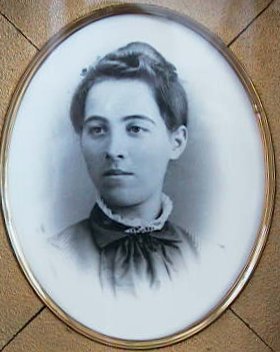


According to her obituary from the Concordia Kansan of May 11, 1961, Christina (Nelson) Fredrickson "was born at Visby, Sweden, May 4, 1867, the daughter of Nels and Katrina Nelson". Information now available establishes that her fathers name was, in fact, Nils Tomsson and that the place of birth was Nickarve, Havdhem, Got land, Sweden. The name Nelson that she took upon coming to this country was derived from her fatherís first name (Anglicized to Nels). Had she remained in Sweden, however, her name would have been Christina Nilsdotter, a naming convention for girls not continued here. Nickarve is the name of a farm, township, or village where she was born. Havdhem is the name of the town and also, apparently, of the parish.
Gotland is an island located in the Baltic Sea directly to the south of Stockholm and almost midway between the Swedish coast and that of Latvia to the east. During the Soviet era, our Latvian neighbor in Virginia told of being part of a group of expatriates that regularly gathered in Gotland on Mid-Summer Nights Eve to protest and mourn the occupation of their homeland. Gotland was chosen because they could see the lights from Latvia across the Baltic at night.
The island is only about 106 miles long and less than 35 miles at its widest point. It has a long and rich history and has spent almost as much time under German and Danish control or self-rule as it has as a part of Sweden in the last thousand years. It has been a part of Sweden continuously since 1685, however. The capitol of Gotland, Visby, was an important trading port during the middle Ages and was one of the founders of the Hanseatic League. This was a confederation of trading cities of Northern Germany and the Baltic Sea created in the later part of the 13th century to protect their commercial interests during a period of weak or non-existent national governmental power.
Visbyís period of importance passed within 150 years and the island became a pawn in the warfare amongst the Germans, Russians, Poles, Danes, and Swedes which went on with little respite during the 14th, 15th, and 16th centuries. Gotland is described in its own ancient mythology as an island that rose from the sea in the morning and returned to it at night. It has, in fact, emerged several times in geologic history only to be submerged again. Its soils are of limestone origin, however, and are relatively rich agriculturally. As a result of its location in the sea, the climate is quite mild, thus the boasting that "the roses bloom until December". This combination of soils and climate has fostered an agriculture that has long been a very significant industry and was, up until the past century, the most important source of employment and income.
Gotlandís current population is approximately 55,000, about 0.7 percent of the total Swedish population. Tourism is now the most important source of revenue, and the number of visitors to the island is now in the range of 650,000 annually.
Our Swedish (and Norwegian) forebears left in the 1860s and 1870s during a period of expanding population and declining living standards. There were none of the famines that drove emigration from other parts of Europe, but there were actual food shortages. Living conditions were hard, and the promise of the employment and income that industrialization was to bring during the next forty to fifty years was nowhere in evidence.
There was, for some, the prospect of religious freedom in this country as an additional incentive to emigrate. Those who chose to worship other than in the state Lutheran church were no longer subject to active persecution in the mid-1800s, but there is little doubt they were subject to ridicule, at best, and discriminatory treatment, at worst. Both of our Swedish grandparents were Baptists in Sweden, and there can be little doubt that this was a contributing factor in their determinations to come to America.
Christinaís family had been Baptists at least as far back as her grandparents. She was born a twin, and there is a note in the birth registry indicating "the parents refused to let the children be baptized". Her sister Magdalena died of causes now unknown before reaching the age of one.
The information provided by Elizabeth Molin traces her ancestry (and ours) back eight generations prior to hers. These people lived in the mid 1600's and are great(10)-parents of Kaci, Elle, Taylor, Ben, Nicholas Jacob, and Luke. The Nelson family tree chart is included in the Genealogy section.
A letter included in the Archives from Mr. David Larson to
Louise Ganstrom indicates that some of the attached documents show that Christinaís grandfather, Tomas Tomsson left for America in
1870 when he would have been 63 years of age. He also reports from these same
documents that an Aunt Gertrud comes to America in 1869 as does an elder
brother, Anders in 1874. Christinaís Aunt Gertrud (known in the oral history
as "Auntie Anderson") was the lady to which she came in this country.
Anders (Andrew) and another brother, Carl, did come to the Gotland community in Kansas.
A picture of Carl, or Charley Nelson as he was known and one of the Anders
Nelson family are included in the Photographs section.
We now know that Christina Nilsdottor was born at Nickarve, a farm in the parish of Havdhem in the southern part of Gottland. The location in indicated on the map included in the Archives section. The pictures of the house and barn are from a videotape taken by Elizabeth Molin for David Larson.
One of the fascinating questions raised by the few documents and sparse information we do have at hand comes from one of the translated letters which is included in the Archives section. This letter is dated February 18, 1894, with the salutation of Dear Brothers and Sisters. The mailing address (apparently from the envelope) is Mr. C. L. Fredrickson. It was signed by a John Sevesson or Persson, the interpreter being uncertain of the handwriting. The first two paragraphs of the letter concern the possible emigration to America of a young lady who would be 18 years in the coming summer. It is apparent that the American recipients of the letter have by previous letter offered to be of assistance in this regard.
The interpreter was unable to make out the name of the young lady, and the names John Sevsson or John Persson were both unknown. When the additional family information provided by Elizabeth Molin and Mr. Larson is applied, however, some questions are answered while still others are opened. Six children, including two sets of twins, were born to Christinaís parents. Four of the six, Maria, Anders, Carl, and Christina, survived to adulthood. Maria was born in 1849, married Johan (John) Persson, and had five children. The next eldest of her children, born in 1876, was also named Maria.
This second Maria would have been Christinaís niece although only nine years younger, and she would have been 18 years old in 1894. She is almost certainly the subject young lady in the 1894 letter written by her father and Christina and Andersí brother-in-law Johan Persson. If this is true as it seems it must be, it establishes that there was correspondence between Christinaís family in America and her family in Sweden as there was between Charles and his father and sister. We do not know as a certainty whether Maria did come to this country that summer when she would be 18 or, if she did, whether she came to Kansas. Cousin Eunice does recall, however, that Aunt Alice told her that a niece of Grandmother Fredrickson came to stay with them when she was a small girl. Again, all of the letters and documents on which the foregoing is based are all in the Archives section.
According to the oral history, Christiana left for America by
herself at age 16. She came to the Concordia area to work out her passage as a
domestic employed by "Auntie" Anderson who was a sister of Christinaís father.
He husband, Charles Andersson, was a brother of Christina's mother. Their
four children had all died at birth or in early infancy. The history of
the Swedish Baptist Church (Archives, page #14) establishes that Charles
and Christina Andersson and her father, Thomas Tomasson, were three of the
original nine members of the church.
passage as a
domestic employed by "Auntie" Anderson who was a sister of Christinaís father.
He husband, Charles Andersson, was a brother of Christina's mother. Their
four children had all died at birth or in early infancy. The history of
the Swedish Baptist Church (Archives, page #14) establishes that Charles
and Christina Andersson and her father, Thomas Tomasson, were three of the
original nine members of the church.
One of Dadís favorite stories of his mother had to do with her having climbed one of Auntie Andersonís apple trees early in the spring as the tree was first beginning to bud and tying a red ball of about the right size high in the tree. She then made certain that the fine, ripe "apple" came to Auntieís attention. The lady was both excited and delighted by the extraordinary productivity of her apple tree and called to her husband to see their good fortune. He was not fooled, but they both apparently enjoyed the joke.
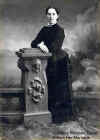 Charles Andersson died in 1904, but "Auntie" Andersson
lived into her 95th year and died in 1929. She spent the last several
years of her life in Sunset Home, and cousin Keith Fredrickson, among others,
remembers her well. There is no record of how long our grandmother stayed
with the Anderssons, but she related that she left to take a housekeeping job in
Concordia because "Auntie" Andersson refused to buy her a new hat she
wanted to wear to a church conference.
Charles Andersson died in 1904, but "Auntie" Andersson
lived into her 95th year and died in 1929. She spent the last several
years of her life in Sunset Home, and cousin Keith Fredrickson, among others,
remembers her well. There is no record of how long our grandmother stayed
with the Anderssons, but she related that she left to take a housekeeping job in
Concordia because "Auntie" Andersson refused to buy her a new hat she
wanted to wear to a church conference.
There was apparently a number of young women similarly employed in Concordia at the time. They were both friends and competitors. One of the areas of competition was getting the weekly wash on the line the earliest. She maintained that some of the young women resorted to washing clothes on Sunday afternoon to make an early showing on Monday morning possible. I cannot imagine that such tactics were ever necessary for her!
Christina Nelson and Charles Fredrickson were married in
Concordia on October 22, 1887. We believe the individual portraits of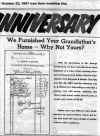 them that
survive and are included at the outset of these profiles of them were probably taken immediately before their marriage. These portraits
came from an album belonging originally to "Auntie" Anderson.
them that
survive and are included at the outset of these profiles of them were probably taken immediately before their marriage. These portraits
came from an album belonging originally to "Auntie" Anderson.
 Nine children were born ending with the arrival of Lane in 1913.
The only know portrait of the family was taken in 1917 in anticipation of the
two eldest sons leaving for service in World War I. This portrait is also
included in the Photograph album section.
Nine children were born ending with the arrival of Lane in 1913.
The only know portrait of the family was taken in 1917 in anticipation of the
two eldest sons leaving for service in World War I. This portrait is also
included in the Photograph album section.
The challenge of being mother to a family of nine, wife to a
Charles Fredrickson, and the superintendent of a household operation that
included the feeding on an ongoing basis of several hired men as well as her own
family, all without benefit of such modern day necessities as electricity or
running water, is almost incomprehensible. That was the job description of the
farm wife of that time, however, and no one who ever knew her thought for a
moment that she might ever have been stressed in the least by it. She was a
person of extraordinary energy and capability along with a forceful personality
and a natural sense of command.
command.
She did, indeed, have a commanding and forceful personality, but it was softened by sense of good cheer and happiness that always seemed to surround her. She was naturally outgoing, loved conversation, and a full and hearty laugh was never very far away. Her sense of humor was especially keen, bordering on wicked at times. In my recollection, this aspect of her was best reflected in her ability at mimicry. She could literally bring people to life before oneís eyes and hugely enjoyed doing so. I doubt she ever actually did a malicious deed in her life; but when her little vignettes recreated people of whom she disapproved or with whom she had no patience, the boundary was very nearby.
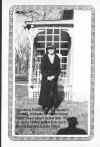 Dad, whose adoration of her was total, always said that she had
a considerable temper and that she could express herself with particular force
when she was angry. She "rode herd" (her terminology for babysitting)
on Jan and me any number of times. Without fail, Mother, who in later years
openly admitted to being intimidated by her mother-in-lay,
Dad, whose adoration of her was total, always said that she had
a considerable temper and that she could express herself with particular force
when she was angry. She "rode herd" (her terminology for babysitting)
on Jan and me any number of times. Without fail, Mother, who in later years
openly admitted to being intimidated by her mother-in-lay, would tell us to
"be good and mind Grandma". Neither of us has ever been given more
unnecessary counsel! At that point, we had never seen her displeased in the
slightest, but no one needed to tell us that tempting the fates in that fashion
was a very bad idea.
would tell us to
"be good and mind Grandma". Neither of us has ever been given more
unnecessary counsel! At that point, we had never seen her displeased in the
slightest, but no one needed to tell us that tempting the fates in that fashion
was a very bad idea.
I do recall a couple of incidents where her tolerance level was exceeded. She came to stay with us for a time shortly after we had moved to the farm at Belleville. While she was there, the township assessor came to take count of the personal property subject to taxation. He lived about three miles distant and was one of the first of their new neighbors the folks had met. He was a great storyteller and gossip, the collection of which had a higher priority for him than did the property tax data. He and Dad hit it off well and the jokes and stories continued while the rest of us listened.
All went well until he told a joke, the butt of which was the religious denomination of the storytellerís choice. I have always assumed that the old gentleman assumed that these Swedes were Lutherans, and he made the unfortunate choice of Baptists as the target of his joke. He had no more than finished his story when Grandma erupted with, "WE"RE BAPTISTS". He made an abrupt and well-advised determination that his business there was completed and left.
Mr. Truman was President while she was there, and Grandmaís opinion of him was even lower than the esteem with which he was held generally at the time. She would be utterly incredulous to learn of the profoundly elevated historic regard that he now commands. He could have done nothing of which she would have approved, but his occasional use of profanity in public utterances was a source of special irritation to her. From time to time at mealtime, she would express her dislike and disapproval of the President in no uncertain terms. Dad would then slyly remind her of Mr. Trumanís religious affiliation, "But, Ma, heís a Baptist". There was never any doubt or hesitation in her response: "HEíS NO BAPTIST". She knew that she was being teased, but the truth, as she saw it, required unequivocal expression.
Grandma was by accounts a wonderful cook, and one who apparently
never operated with the use of a recipe. Her Swedish brown bread baked fresh
every day when the kitchen was hers was probably her signal preparation. No one
who ever tasted it fresh from the oven ever got all they wanted of it or every
forgot how delicious it was. There was, of course, no written recipe, and the
daughters-in-law, all under great pressure make brown bread like Mother did,
were reduced to attempting to learn by watching. Aunt Eda, a splendid cook in
her own right, was the only one, to my knowledge, who ever recaptured the magic.
bread baked fresh
every day when the kitchen was hers was probably her signal preparation. No one
who ever tasted it fresh from the oven ever got all they wanted of it or every
forgot how delicious it was. There was, of course, no written recipe, and the
daughters-in-law, all under great pressure make brown bread like Mother did,
were reduced to attempting to learn by watching. Aunt Eda, a splendid cook in
her own right, was the only one, to my knowledge, who ever recaptured the magic.
Mother refused to try or even to help me try to do it. She made reference to watching the preparation several times before giving up in complete frustration. According to Motherís description, everything happened so rapidly that it was just a blur. Nothing was measured or counted. Amounts were added seemingly without any thought being given. Then after all of the ordinary ingredients had been marshaled, the icebox was inspected for leftover fruit or small amount of jams or jellies which were then incorporated.
In telling me about it years later, Mother made two comments regarding the experience, both of which I recall with utter clarity. I think my recollection is vivid because both of the comments say much about each of the women involved. Of the bread: "I knew if I ever attempted to make bread in that fashion it would never rise over an inch and would not be fit to eat if it did". Off her mother-in-law: "At first I thought she was deliberately doing this at such break-neck speed to make it difficult for me. Later I realized that this was the way she did everything. It was the only speed she knew."
Our cousin Millard Ross, the eldest of Grandmaís grandchildren reports that, since she never knew how many would be on hand for supper on Sunday evening, the menu was fixed with easily expandable quantities. There was canned salmon, cheese, canned fruit, and her special home made biscuits, with coffee and milk to drink.
Jan and I looked forward to Grandmaís visits with great anticipation. She was generally fun for us, and the dinner table conversation was always especially enjoyable as she and Dad would reminisce. They were both great storytellers, and one fed off the other. We also particularly enjoyed going to church with her.
The Baptist Church in Belleville, in stark contrast to the large Baptist congregation in Concordia, was made up of a few hardy souls. An attendance larger than 40 for a Sunday morning worship service required the special incentive provided by Christmas or Easter. In addition to the limited numbers, the congregation was virtually devoid of musical talent. I am sure the Lord viewed those services with the approval only He can provide, but I am equally persuaded that even He must have occasionally cringed and averted His eyes during our persecution of some of the canon of sacred music.
Grandma had a strong and melodic voice and her knowledge of the
hymns was apparently complete. She required no support from other worshipers and
was totally undeterred by all of the feeble efforts at every hand around her.
There is no doubt she drown 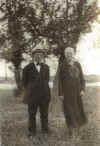 out the choir, but that would be damning with faint
praise. To my knowledge, she never said anything about it, but all of what is
now called body language fairly screamed, "Now THIS is how the Lordís
music is to be sung! Some of her children, George and Paul in particular,
inherited generously of her vocal talent. Dad did not, and, unfortunately, not
of that gift leaped over the divide to our generation either.
out the choir, but that would be damning with faint
praise. To my knowledge, she never said anything about it, but all of what is
now called body language fairly screamed, "Now THIS is how the Lordís
music is to be sung! Some of her children, George and Paul in particular,
inherited generously of her vocal talent. Dad did not, and, unfortunately, not
of that gift leaped over the divide to our generation either.
She went to Sunset Home in Concordia to live in 1939 or 1940
following Grandpa Fredricksonís death in 1937. Millard recalls being told that
a lifetime residency in the home cost $2000.00 at that time. When she died in
1961, the annualized cost, even on a present value basis, would have been less
than $125.00 per year.
 She spent her last years in Sunset Home in Concordia surrounded
by family and a legion of friends. We visited at least once every two weeks, and
it was a rarity if she did not have other visitors while we were there and often
several of them. She lived just past her 94th birthday and retained
marvelous memory and mental clarity until the very end of her life.
She spent her last years in Sunset Home in Concordia surrounded
by family and a legion of friends. We visited at least once every two weeks, and
it was a rarity if she did not have other visitors while we were there and often
several of them. She lived just past her 94th birthday and retained
marvelous memory and mental clarity until the very end of her life.
History Charles Carl & Alma Amelia Edmund Archives Genealogy